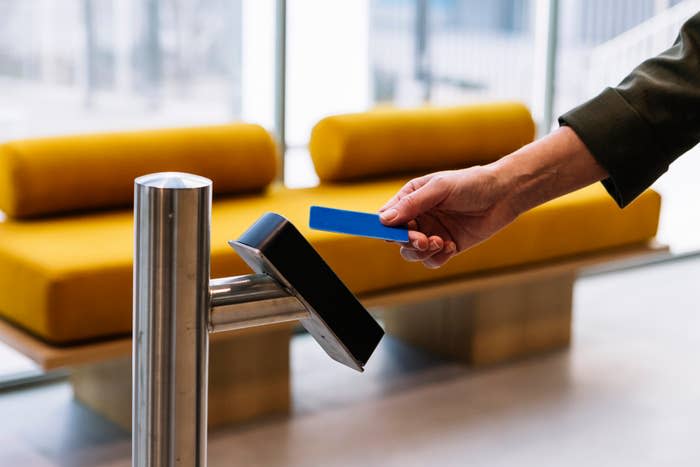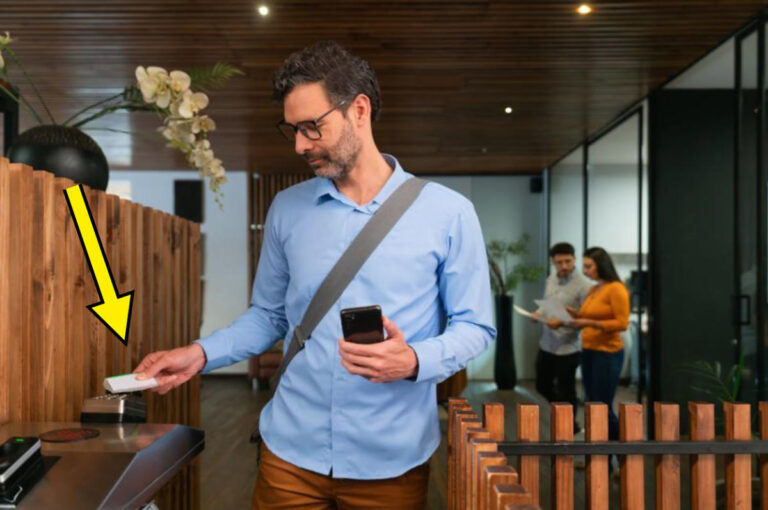Do you enter an office building to perform an in-person assignment and then leave as quickly as possible? There’s a word for your secret strategy: “coffee badges.”
This means coming into the office long enough to get a coffee or take part in a meeting to fulfil your office obligations, but continuing to essentially work from home as much as possible.
This new workplace term was popularized by videoconferencing company Owl Labs, which defined it as “show up at the office and go home.” In a 2023 report of 2,000 full-time U.S. workers, 58% of hybrid employees said they practice “coffee badges,” and an additional 8% said they were interested in trying it.
As hybrid working arrangements become a more permanent feature of office life, coffee badges are here to stay: In a recent LinkedIn News survey of 1,568 people conducted in June, 19% of LinkedIn users said they still keep a “coffee badge” at work.
Amanda, an IT project manager at a Chicago-based health insurance company, is one of them. Her company has a hybrid policy, and she asked not to use her last name because of her job. She said her managers are open with employees about tracking badge swipe counts for “badge reports” that calculate the percentage of people who are in the office each week or month.


Although she has never discussed her attendance record, she knows that badge swiping could lead to performance issues and is keen to commute to the office because she “doesn’t want that conversation to ever come up.”
As a result, Amanda says she stays at least four hours as a signal that she’s here, but plans to go home when she can. The feeling that her attendance is being recorded is certainly “uncomfortable,” she says.
If possible, she would like to be a fully remote employee because her direct manager works in another city, she meets far-flung colleagues via video conference, and she finds daily office commutes exhausting and a “waste of time.”
“I don’t want to be here. I can do this from home,” Amanda said.
Thus, coffee badges, both in and out of work, are a way to regain control and autonomy over how work gets done. While my employer may dictate some of my time, the strategic coffee badge philosophy is that I never give them a second more than they need.
Why coffee badges could be a response to employer surveillance


And it’s not just in employees’ heads: Badge logging could actually have a negative impact on one’s career: In January, one professional services firm reportedly showed an analysis of partners that linked office attendance, derived from turnstile data, to mid-year performance reviews.
In her book Algorithms: How AI Decides Who We Hire, Monitor, Promote, and Fire, and Why It’s Time to Fight Back, journalist Hilke Shelmann interviewed HR directors to hear stories of companies making promotion and firing decisions based on badge log data.
“They wanted to promote people who spent the most time in the office, so they looked at key card swipe-in data,” Shellman said of the company. “Then when the pandemic hit and they had to consider layoffs, they wanted to use this kind of data again to understand who was the least productive, so they were going to look at badge data logs.”
But let’s be clear: badge swiping is a false signal of performance in the workplace.
Determining productivity through badge swipes “could negatively impact people who are on sick leave or who have caregiving responsibilities who literally know they’re going to be sitting at a desk less often than others,” Shellman said.
So why do employers seek to find deeper meaning in badge logs, despite their obvious flaws? Maybe it’s because badge logs are part of the growing field of people analytics.
“Companies want to use data about their employees,” Shelman said, adding that “admins aren’t just [wanting] Look around the room and see the people in their seats.”
“It’s all about impression management,” she added.
But a warning to coffee lovers: just having one cup of coffee is not enough, because your boss can easily find out how long you’ve been in the office and may feel betrayed by your comings and goings.
“Digital technology means everything leaves a trace now, and that trace can be checked by your superiors,” Shelman said.
How to use coffee badges effectively


You can either begrudgingly go to the office or be realistic about your office-based responsibilities, which can be a helpful attitude adjustment.
“Reframe your coffee badge so that you feel like you’re making the most of the situation,” suggests Archana Bharathan, executive coach at Columbia Business School.
Ms. Balasan said that if she had a choice, she would prefer to work fewer days a week than three, but “I would still go to work because I know the benefits of going to work.”
Because her role is to build and deepen relationships with her colleagues, she finds face-to-face time encouraging, but acknowledges that if she’s an individual contributor primarily working on Zoom calls, her productivity may be reduced.
Varathan advises fellow coffee lovers to find ways to spend their time in the office productively. She suggested scheduling meetings on the same days as in-person meetings.
“If you have the flexibility to choose which three days you need to work, think about how you can combine your commute with other things in your personal life that need your attention. [like] “If you need to run an errand, come by,” she said.


And if you’re the manager of a team that’s implementing “coffee badges,” it’s time to dig deeper into why this trend is happening.
“Are people who spend more time in the office performing better? Are they coming in to attend meetings and collaborative spaces? Or are they just spending time commuting to join Zoom calls from the office instead of at home?” suggests Bonnie Dilber, recruiting manager at app automation company Zapier.
“Great managers focus their teams on the most impactful behaviors, so my recommendation to employers who see employees behaving in a perfunctory manner to meet minimum expectations in the office is to consider whether that expectation actually translates to impact,” she continued. “If the answer is yes, make sure employees are aware of this and spend more time in the office. If the answer is no, reconsider the requirement.”
Word of advice to the wise: Coffee badges aren’t an accurate indicator of someone’s performance. Busyness doesn’t equal accomplishment. Just because you see a colleague physically typing away at the desk next to you doesn’t mean they’re actually working.
Let’s hear from Amanda. Instead of focusing on the number of times an employee swipes their badge, she recommends that managers “look at the work that’s actually being done and the feedback from others involved in that work.” [have] We worked with individuals as true measurers.”This article was originally published on Huffington Post.

